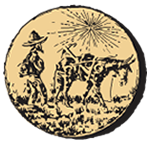Mining and Minerals Education Foundation |
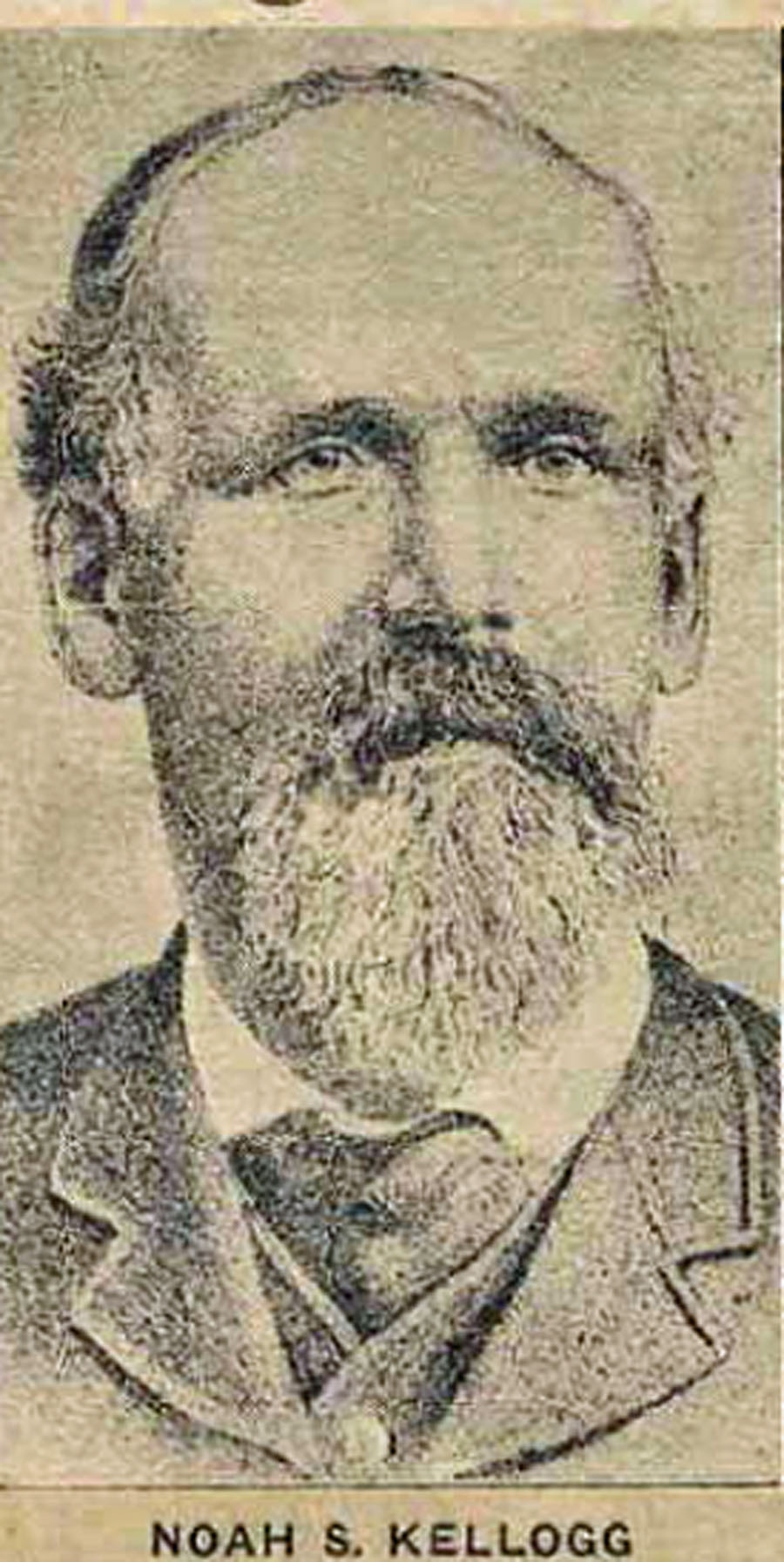
Noah S. Kellogg (1831 - 1903)
Prospector and Discover of Bunker Hill Mine
2020 Inductee from Mining's Past
Noah S. Kellogg was a carpenter and prospector. He joined the rush to the Coeur d’Alene mining district in Idaho when he heard news of the discovery of gold, arriving with thousands of others in 1884, too late to locate a promising claim. In 1885, after working on a flume to carry water from a creek to potential placer gravels, he found himself suddenly unemployed when the project abruptly closed due to lack of funds.
He sought a grubstake to go prospecting. A merchant, John Cooper and a small contractor, Origin Peck, reluctantly supplied Kellogg with supplies and a burro. The burro became the matter of much folklore. The grubstake was conditional on Kellogg taking the burro, which was a braying and annoying critter disturbing the people in Murray.
Kellogg prospected along Milo Creek, a tributary of the South Fork of the Coeur d’Alene River. There are many versions as to the actual discovery of the Bunker Hill orebody, most involving the burro which apparently wandered off and was found near an outcrop bearing galena.
Kellogg staked the ground. It soon became apparent that the discovery was a valuable one, and lawsuits over ownership followed. After the matter was settled in court, Kellogg retained a significant share in the mine and found himself wealthy, however, he squandered his earnings. He died in 1903, and is remembered for the discovery of the Bunker Hill mine and has the City of Kellogg named after him.
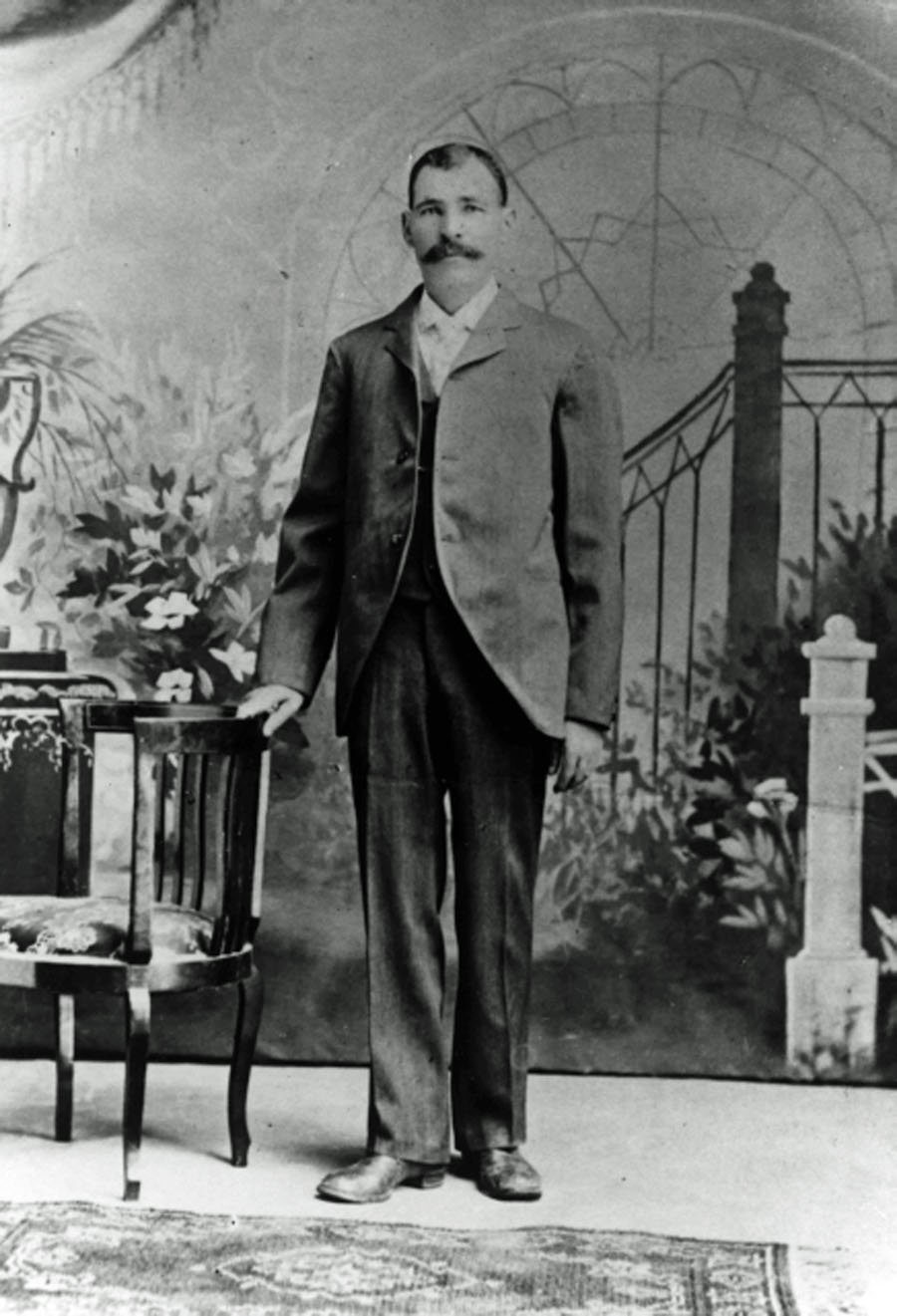
John Barry "Black Jack" Newman (1862 – 1928)
"Nose for Ore"
2020 Inductee from Mining's Past
“Black Jack” Newman was born in Chorna, Austro-Hungarian Empire. He immigrated to the US around 1876 and worked at various jobs as he traveled west; pushing coal cars in Pennsylvania, working in the copper mines of Michigan, and working on the Texas & Pacific railroad in Texas. By 1883, he arrived in Globe, Arizona and hired on as a mucker at the Old Dominion Mine.
He had a ”nose for ore” and staked or acquired numerous claims in the area west of Globe. J. Parke Channing, who would become a major force in the development of the Miami Copper Company, liked some of Newman’s claims and optioned them. This required sinking a shaft to verify Channing’s belief in the presence of secondary copper enrichment.
Newman, superintendent for sinking the shaft, was so convinced there was ore that he disregarded orders telegraphed to stop work, hitting ore a day later. In less than four years from the initial discovery, Miami Copper Co was in production. It shares the honor with the Ray Mine as being Arizona's first large scale porphyry copper producer.
Newman had other claims in the area that became part of the Inspiration Consolidated Copper Co.
Newman invested money from these successful mining ventures into building apartment houses, and the Dominion Hotel in Globe. When asked why he built a four-story brick hotel in a shabby area, he replied it was necessary to have a place to wine and dine potential investors.
By 1910 Newman moved to Santa Monica California to give his children a better education. Here, he invested in real estate and farming. He died in Santa Monica in 1928.
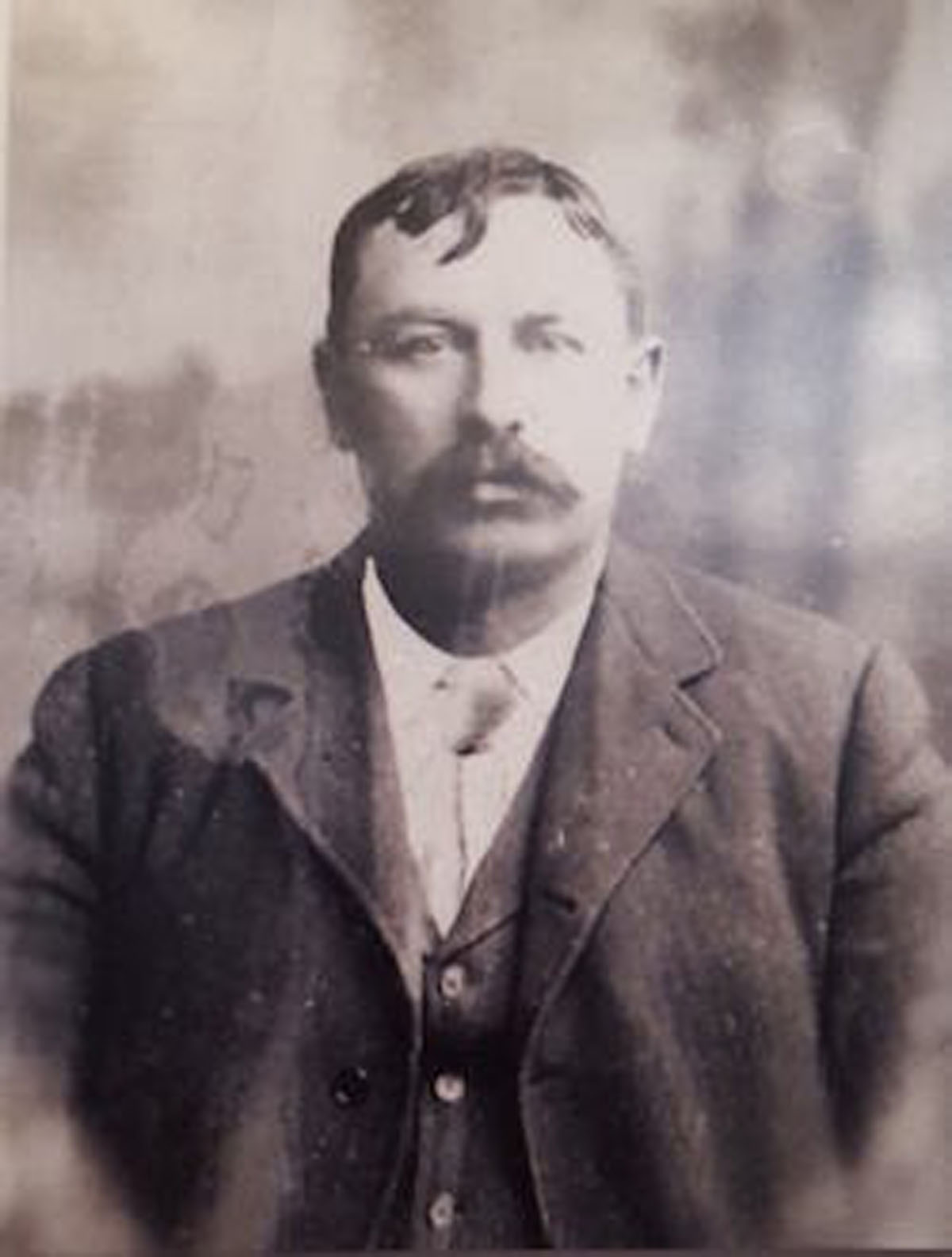
Lemuel Coover Shattuck (1866 - 1938)
Miner, Rancher, Merchant, Banker
2020 Inductee from Mining's Past
Lemuel Shattuck left his home near Erie, Pennsylvania at age 17 to work at a family owned cattle ranch in Arizona. After 4 years of being a cowboy, he sought employment in mining, which paid three times more than cowboy’s pay. The mine where he worked closed, which prompted Shattuck to head to other mining camps in the west.
During the next two years, he worked at mines and placer fields in Arizona, Nevada, Utah and Montana. After working through the winter of 1887-88 at Butte, Montana, he decided Arizona was the place to be. He arrived back in Bisbee flat broke by the end of 1888.
The day after his return to Bisbee, he started work as a trammer at the Copper Queen at $3 for an 8-hour day. In his spare time, he located a nearby clay deposit and made adobe bricks. This lead to a profitable sideline. He expanded the business and hired local help, thus starting his business ventures.
By 1892, Shattuck was able to quit his job at the mine and devote full time to his business ventures. These included a lumber yard, a beer franchise, a bar, mines around Bisbee as well as a Mexican venture, and a bank. The Bisbee mines were high grade and successful. Ultimately, the Shattuck mine merged in 1925 with the Denn mine, in which Shattuck also had an interest, to form the Shattuck Denn Mining Co. Phelps Dodge Corporation purchased the Shattuck Mine in 1947. Between 1906 and 1947 the Shattuck Mine produced more than 3 million tons of copper and lead-zinc ore along with some manganese oxide.
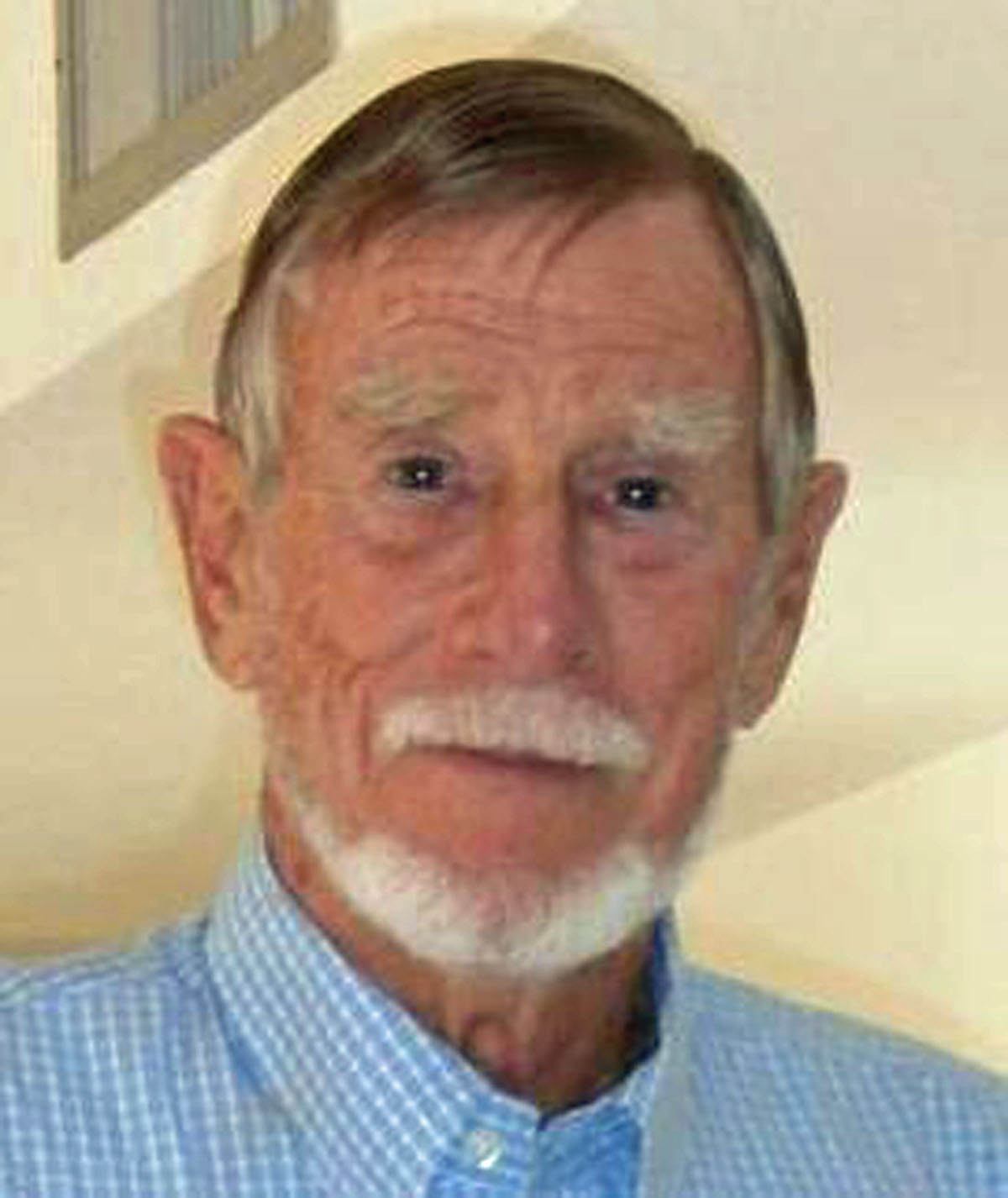
Albert J. (Al) Perry (1930 - 2013)
Exploration Geologist
2020 Inductee from Mining's Past
Albert J. (Al) Perry was born in 1930 in White SuIphur Springs, West Virginia. He served in the United States Marine Corps and attended Washington and Lee University, graduating with a Bachelor of Science degree in Geology.
With his wife Mary, he went to the University of Colorado, where he earned a Master of Science in Geology. The 1950’s uranium boom led him to become an exploration geologist with Union Carbide, where he branched out to explore for other metals, including silver and gold.
From this experience he formed Perry, Knox and Kaufman (PKK), a consulting and contract exploration company, that determined that lower grade silver mineralization present in the Silver City district in Idaho and at Candelaria, Nevada, could be successfully mined using conventional open pit methods.
After the dissolution of PKK in 1979, the developing world-wide exploration boom for gold started him on a path that focused on grass-roots exploration extending from the western U.S. to Australia, Fiji, and Africa.
In Ghana and Eritrea he achieved his greatest exploration success, single handedly discovering the Nkron Hill deposit in Ghana, and the Emba Derho, Adi Nefas, Gupo, and Debarwa deposits in Eritrea. Together, these deposits have been developed into mines containing more than 2 million ounces of gold.
While working in Africa, Al developed a passion for supporting the less privileged people he encountered by funding university degrees for two Ghanaian students, and helping to support a church-run boarding school in Ghana. He considered these to be among his greatest accomplishments.
